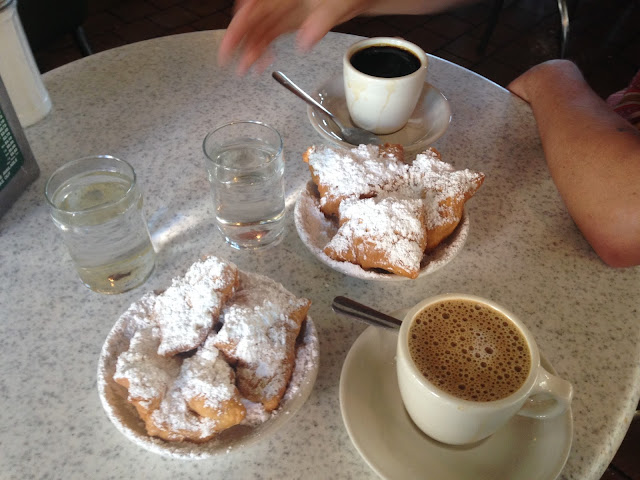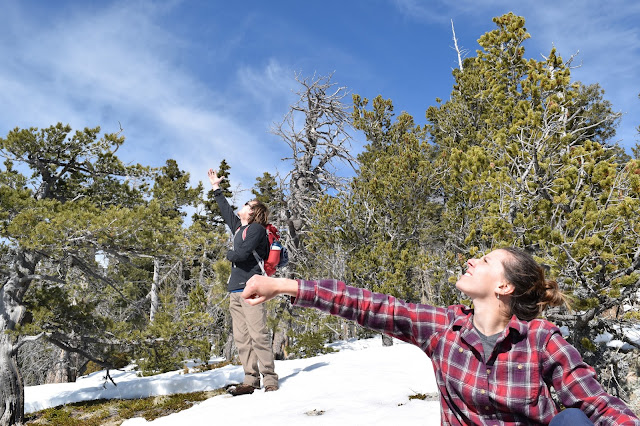Leaving New Mexico for our next farm in Texas, we took a detour down south to visit Big Bend National Park. Spring break is the most popular time of the year to visit there (it's way too hot during the summer months!) and has the fastest growing visitation rates of any national park. Needless to say we shared the park with many other people, but managed to secure back-country camping permits for two nights. The combination of mountain, river, and desert ecosystems created a spectacular unique landscape, and there were pretty little wildflowers blooming everywhere. The cloudy weather kept us cool and comfortable during our hikes.
View of the Rio Grand, Mexico in the distance!
On the way to the top of the Lost Mine Trail
Lost Mine Trail summit
Sunset at first back-country campsite
Reilly on the way to the hot springs
Sunset at second back-country campsite
Skinny Lane Farm
The next farm on our WWOOF agenda was Skinny Lane Farm, located in Elgin, Texas about a 30 minute drive east of Austin. The weather there reminded me of Minnesota in August- the first week was 80's, sunny, and humid, and everything was bursting with green. Unlike my native state, there were giant insects and poisonous snakes (Texans did not believe my claims that, besides mosquitos, most creatures do not bother us up north!). Luckily my only encounters with the harmful fauna was an assortment of spider and fire ant bites irritatingly between most of my toes.
Our daily responsibilities included taking care of the menagerie of animals, in addition to about 5 hours of working in the fields. My favorite livestock was the affectionate and curious Nigerian Dwarf goats, whom I would favor with imperfect strawberries because I enjoyed watching them nibble the treat out of my palm. There were also many different varieties of laying hens (white, brown, and green eggs!), a pair of Bourbon Red turkeys, and four Red Wattle hogs (named for the skin appendages on their neck). Both the turkeys and the hogs are a dwindling
heritage breed. Rue the donkey, (whose mother died from a rattlesnake bite long ago), is the livestock protector and watches over the others.
Skinny Lane Farm has several large outdoor vegetable fields, a greenhouse for growing plant seedlings, and a high tunnel for growing in the winter. During our time there we planted hundreds of transplants (leeks, radish, squash, cucumber, pollinator flowers), weeded, watered, harvested, and finished miscellaneous farm tasks that needed to be accomplished. The farm is currently not selling shares for a
CSA because owners Mike and Bekki both work at office jobs, and are planning to build a home on the land this year. We did harvest and deliver small orders to the local grocery store in Elgin and to a handful of committed customers across the area.
Mama goat enjoying an offering of lettuce
Goat cuddles
All three fighting over food!

Red Wattle Hogs (heritage breed)
Bourbon Red Turkey (heritage breed)
Skinny Lane farm high tunnel
Marc and Reilly planting leeks
Sunset at the farm
Wildflowers in bloom!
*if you want to hear our baby goat story, ask us!
Austin & San Antonio
My favorite part of staying in Texas was being able to spend the weekends visiting Reilly's cousin Jennifer, who has a house in Austin. She has lovely roommates, a wonderful porch for lounging, and it was an all-around grand time to explore the city together.
We spent Easter weekend exploring San Antonio, strolling on the River Walk and stopping for drinks on the way. On Easter morning, we rented bikes and pedaled the trail south of the city to the Missions. By chance, we arrived just in time for a Catholic service at The Mission Concepcion which is "the oldest unrestored stone church in America", dedicated in 1755. It was quite an experience! Afterward all the neatly dressed children ran across the lawn searching for plastic eggs.
Downtown Austin and Town Lake
San Antonio River Walk
Mission Concepcion
Breakfast of champions
I strove to collect as many essential Texas activities under my belt during our stay; I ate down-home barbecue and Elgin's famed sausages, swam in the frigid waters of Barton Springs, gorged myself at multiple food trucks, saw live music and drank beer, and even bought a big floppy hat for the sun. I love checking arbitrary items off a mental list and feeling like I have experienced the what I imagine to be the true character of a place. We ended our time in Texas with a huge brunch with Reilly's family at Jennifer's home, staying up past midnight the day before cooking all of the delicious dishes! It was a great way to say farewell to this beautiful place full of vibrant people.
Tune into my next blog for more info on our next steps!
Much love,
Haley






































































